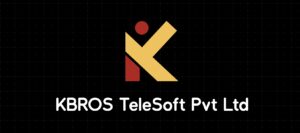While it’s well known that value added service (VAS) provider Bharti Telesoft offers its solutions to over 25 operators globally, including Vodafone, what is not so well known is the fact that the company provides m-commerce solutions (called mobiquity) for Bangladesh’s Grameen Phone. Bharti Telesoft has also won acclaim with its pre-paid mobile solution-PreTUPS-which allows mobile phone users to refill or top-up their accounts over the phone.

How and why did you develop the concept of mobiquity ?
We found that people in the low-income segment were using mobiles to top-up their own prepaid accounts and also those of their friends and relatives. The openness and acceptance level of e-recharge has been very high. Based on this, we believed that we could further enhance livelihoods of lower income segments by providing them with access to financial and banking services-and from this was born the mobiquity concept. We wanted to develop a solution that would interface with banks and with telecom operators, so that the end offering to the consumer was as functional as possible. Mobiquity is an m-commerce application that can be used by operators for utility payments, ticketing, transfers, remittances, all on the mobile.
Many institutions are now working towards low cost delivery options such as Internet banking and cashless transactions. How is mobiquity different?
Mobiquity works with existing infrastructure-as far as the banks, operators and consumers are concerned. Plus, there is no need to be literate to use the mobile phone, as mobiquity can be provided via an IVR and it can support regional languages.
Why did you choose Bangladesh, not India to test and implement Mobiquity?
We are always keen to focus on our home market and are making good progress here. We are in talks with some operators and are discussing ways of implementing mobiquity here, but, nothing has gone live yet. In addition, the regulatory structure of the Indian market is another issue. In the case of Bangladesh, things were in place following the deployment of our prepaid mobile solution-PreTUPS-which allows mobile phone users to refill or top-up their accounts over the phone. Based on PreTUPS, it has been possible to introduce utility bill payments via the mobile, which is a stepping stone to the introduction of m-commerce.
What are the m-commerce services that service providers can offer?
By using the mobile phone as a transaction medium, customers will be able to carry out a wide range of transaction activities. Mobile money transfers can help operators capture a share of the lucrative remittances market, the fastest growing and most stable source of capital inflows in emerging markets. Efficient remittance services, tailored to the demands of migrant workers, enable these workers to remit money home in a safe and timely manner and at a reasonable cost. This can be further extended to include person-to-person, person-to-merchant, merchant-to-merchant and person-to-agency transactions. Besides, a large segment of downstream customers use a range of informal mechanisms to meet saving needs, including money lenders, savings clubs, and mutual savings societies. The mobile channel extends outreach-enabling banks to mobilise savings from low-income groups and offering flexible savings products in line with the segment’s specific needs. This feature allows the user to deposit small amounts into their account at one of the designated cash deposit locations. These locations could include a range of operator-accredited retail merchants who have agreed to take deposits.
Does India offer the scope for the success of m-commerce? Do banks and telecom companies need to do more?
In India, the consumer’s confidence towards mobile transactions is growing. There are far more mobile phones users than there are as there are credit cards users in India. This reach can be exploited to power the growth of m-commerce Currently, there are various telecom, banking bodies with remits that have ‘boundaries’. These boundaries need to be dismantled so that this new area of m-commerce can grow.
You have linked m-commerce to the micro credit industry-can you explain this?
In the absence of low-cost formal credit services, a large section of the market is dominated by informal credit lending sources such as money lenders. Institutional supply of micro-credit is a function of transaction and administrative costs, which can be reduced using mobile money. Using the mobile money channel, micro-finance institutions can extend reach and significantly reduce operational costs incurred on disbursement and loan collection, and transfer benefits in terms of improving loan products, better access to loans, and lower borrowing costs. Micro-finance agencies can leverage the operator’s retail ecosystem comprising distributors, retailers and street resellers to efficiently streamline micro-finance operations and reduce operational overheads. In short, the speed with which money can be transferred and monitored is much greater than with a cash based system.
